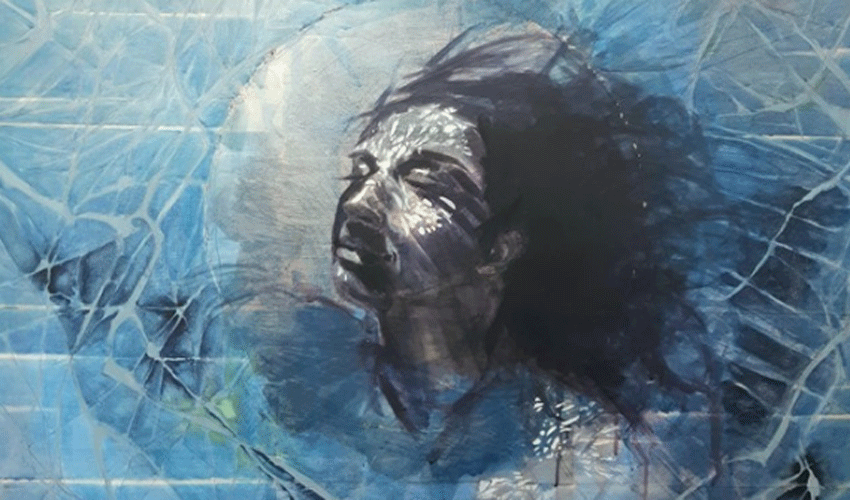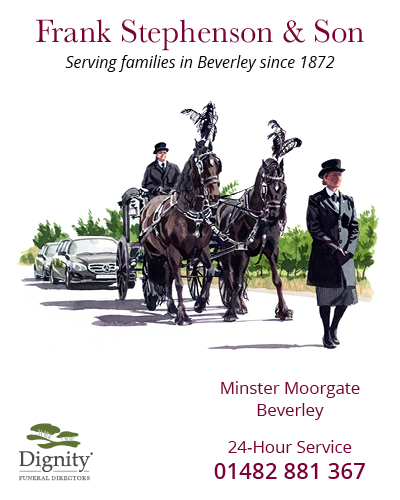
St Mary’s Church in Beverley is presenting a pop-up exhibition telling the story of the town’s dramatic Tudor history.
A dozen life-size reproductions of paintings from the National Portrait Gallery’s prized Tudor collection will be accompanied by artefacts and images from the church itself.
Pictures exhibited from the world’s largest collection of portraits will include King Henry VIII and several of his wives, by great artists such as Hans Holbein.
Framing a tempestuous period of national history in the context of local stories, the portraits will be brought to life by Dr Jennie England, the church’s Heritage Learning Officer, whose popular video podcasts during lockdown shared the building’s history with a wider audience.
St Mary’s is currently completing the first phase of a major ten-year project to restore the entire church. But it is another, earlier, decade-long rebuild that is the inspiration for this exhibition. In 1520, the tower of St Mary’s collapsed.
“Fifty-five people were killed, as the Sunday service was taking place at the time,” explains Dr England. “This loss of life in a close-knit town must have been devastating. St Mary’s is one of the most iconic buildings in the town, so the ruins would have been a striking reminder of the tragedy.” The nave was rebuilt in an astonishingly quick time, taking only eleven years. “People often think of St Mary’s as a medieval church, and much of it is,” comments Dr England. “But the distinctive tower, as we see it today from across Beverley, is actually Tudor.”
The layers of Tudor significance in the building have been spotlighted through ongoing research as part of the National Heritage Lottery Fund supported restoration project. In restoring the stonework of the Nave Clerestory, one of the most endangered parts of the building, the focus has been on the colourful Tudor carvings, or roof bosses, on the 1520s ceiling.
“We have over 600 roof bosses on our ceiling, one of the biggest parish church collections in the country – and many of them date from this rebuild,” Dr England explains. “The timing makes the roof bosses of particular significance and interest: this was right on the cusp of the English Reformation, one of the most dramatic changes the country has ever seen. Life changed beyond recognition for ordinary people up and down the country – something which has resonance for the times we’re living in! We’re looking to tell some of these local stories.”
“Tudor history is enthralling for children and adults alike,” says Roland Deller, Director of Development. “It’s laden with striking characters, dramatic plot twists, intrigue, and drama. It’s bloodthirsty, it’s colourful, it’s political. With this exhibition, we’re picking up on the idea that several of the characters right at the heart of these dramatic national stories have Beverley connections. Bishop John Fisher, for example, was born in Beverley and attended the Grammar School. He incurred the wrath of Henry VIII and his headless body is buried alongside that of Sir Thomas More in the Tower of London. Cardinal Wolsey was Lord of the Manor of Beverley and the rebuild here at St Mary’s was driven by his controller, Sir Richard Rokeby. The Pilgrimage of Grace was a rebellion which almost toppled the monarchy – and it was here on our own Westwood that the protestors gathered. Beverley these days is thought of as a small town, but historically it had a habit of finding itself in the thick of momentous events.”
A highlight of the exhibition will be a talk on 14th November by Tracy Borman, joint Chief Curator for Historic Royal Palaces, which manages Hampton Court Palace, Kensington Palace and the Tower of London. Based on her latest book, ‘Henry VIII and the Men Who Made Him’, Tracy’s talk will delve into the world of Henry’s relations, servants, ministers, rivals, confidantes and companions. The historian is no stranger to the area, having been a student and teacher at the University of Hull where she was awarded a PhD in 1997.
This month sees the conclusion of Phase 1 of the urgent restoration works at St Mary’s, and visitors in recent weeks have been able to admire the newly cleaned and repaired stonework inside the building. “People are always struck by the beauty of the church,” says vicar Becky Lumley, “but what they don’t notice is the perilous state of our stonework. Rain is leaking into the building, and windows are in danger of falling in. So we are one year into our plan to rescue and preserve the building for future generations, and it’s gone brilliantly so far, thanks to the support from the National Lottery Heritage Fund.”
The impact of the restoration gives the project organisers motivation to keep ploughing on. “Thankfully our starting point isn’t as dramatic as it was for the builders in 1520,” says Mr Deller, “but it is precarious. Seeing the craftsmanship of our stonemasons at Matthias Garn Master Mason & Partner gives us a sense of what the building will look like when our work is completed. And we take inspiration from those resolute restorers 500 years ago!”
The National Portrait Gallery is also currently undergoing major development supported by the National Lottery Heritage Fund. “They have closed their doors until 2023,” muses Mr Deller. “I was captivated by their wonderful project, ‘Inspiring People’, where they’ve been lending artworks to other museums around the country. Obviously, not being a museum here, we don’t have the necessary security arrangements to accommodate priceless original works of art. But this exhibition of high-quality reproductions is our own tribute to the gallery’s incredible work. And in the event that we go into another lockdown, this is a flexible arrangement – we can just do it again!”
The exhibition is carefully laid out to comply with distancing – the route follows the existing visitor one-way system, with the pictures spread right around the building. Appropriately, the trail begins at the church’s magnificent octagonal font, which was one of the final elements of the Tudor rebuild. After the exhibition finishes, the church will be lending the pictures to schools and other community groups free of charge, to inspire their own learning.
Alongside the famous historic works of art, there will be a fringe of pop-up shows by contemporary, local artists. Emma Garness, artist in residence at the East Riding Theatre, will be the first to take up a residency in the church, displaying her own work, ‘Nature and Nurture’, in the building for the main exhibition’s first fortnight. Emma painted the magnificent backdrops for the Narnia carvings display in Streamers, the unused shop opposite the church on North Bar Within; she also recently completed a huge mural for St Paul’s Boxing Academy in Hull, reflecting the club’s ethos of self-belief, discipline, community, family, mental health and support.
“Here at St Mary’s we have really missed being able to welcome people into the building for our usual busy cultural calendar of festivals and events,” says Rev’d Lumley. “So we are really pleased that our doors are open now and that we’re celebrating art and creativity in this safe way.”
The Streamers shop window will again feature a St Mary’s display, giving a taster of the exhibition. The exhibition itself, ‘Reform, Rebellion, Restoration’, opens on 23rd October and runs until 6th December, as well as being reprised in the new year. The church will be open 11am-3pm Monday-Saturday, and entry to both building and exhibition is free. A digital version of the exhibition will run concurrently on the church’s website.


